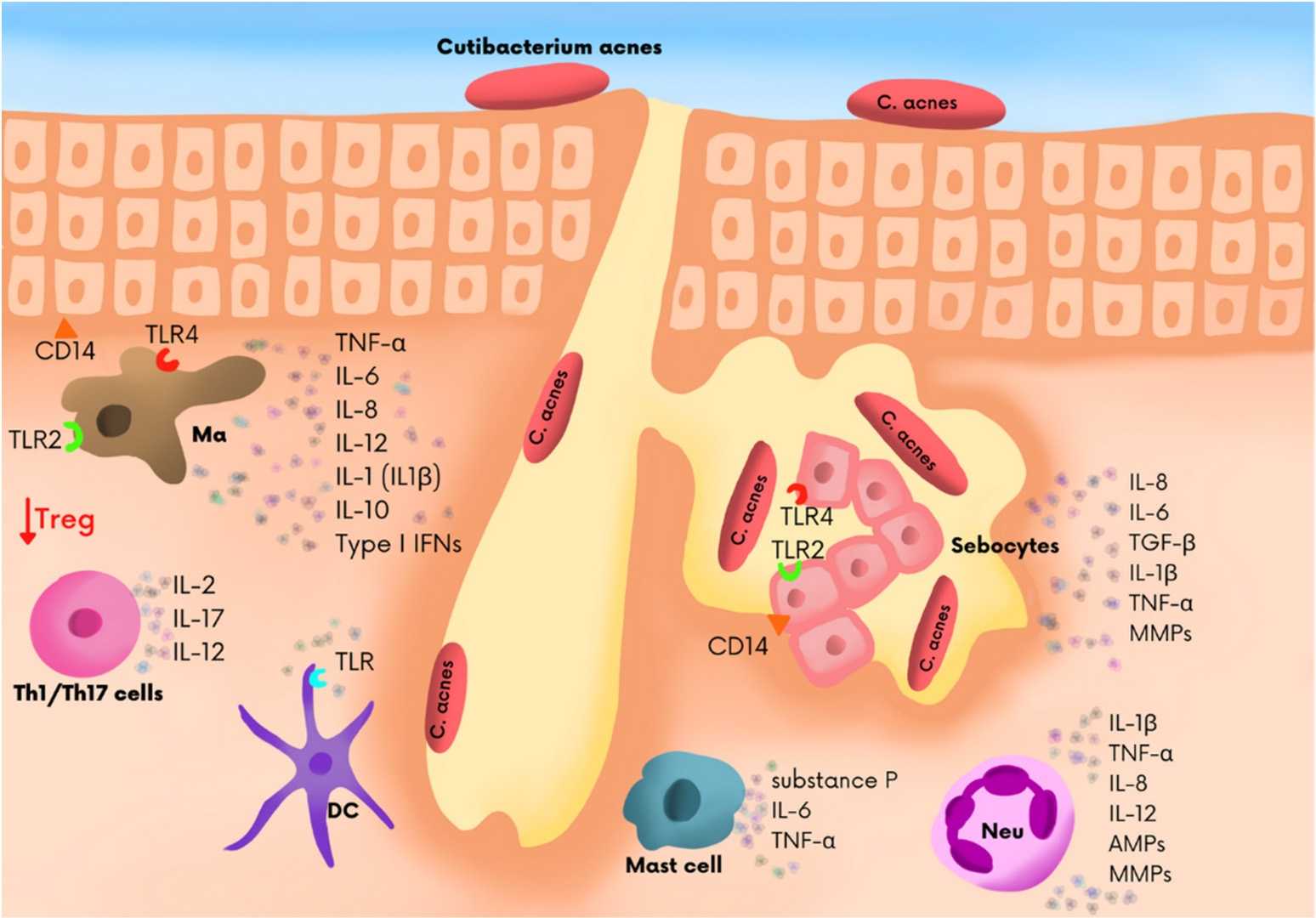Through a meticulously crafted framework, Creative Biolabs leverages iPSCs as the foundational source for differentiated cells or tissues in regenerative medicine, as well as a potent instrument for immune cell therapies. We present IL-8 monitoring assays within an iPSC-derived sebocytes model to expedite the investigation of treatments for acne and hyper/hyposeborrhea.
Acne vulgaris, a dermatological condition frequently encountered during adolescence and early adulthood, manifests through various pathological mechanisms, including enhanced keratinization, sebaceous gland blockage, and heightened androgen-induced sebum production. Additionally, bacterial colonization by Cutibacterium acnes within sebaceous units incites inflammatory responses. Skin cells typically engage in intercellular communication by releasing abundant quantities of biologically active cytokines and chemokines, orchestrating their functions and migration within distinct skin layers.
 Fig. 1 Immune cell composition in the microenvironment of sebaceous glands in patients with acne vulgaris.1
Fig. 1 Immune cell composition in the microenvironment of sebaceous glands in patients with acne vulgaris.1
In the context of inflammatory acne, C. acnes instigates cellular activation through interactions with Toll-like receptors 2 and 4, culminating in the release of pro-inflammatory cytokines, notably IL-8. IL-8 plays a pivotal role in neutrophil recruitment and exacerbates damage to sebaceous gland epithelium, while IL-12 promotes a Th1-type immune response. Moreover, aggravated acne correlates with heightened Toll-like receptor 2 expression, observed within perifollicular macrophages, enhancing their affinity for C. acnes, C. acnes additionally generates small-molecule, non-serum-dependent chemotactic agents that entice neutrophils, traversing the epithelial barrier, into the sebaceous follicle lumen. It also induces the generation of C5a by triggering the classical and alternative complement pathways and subsequent secretion of pro-inflammatory cytokines like IL-8.

Creative Biolabs offers IL-8 surveillance assays across various dimensions. IL-8 secretion is scrutinized through ELISA analysis of cell culture supernatant and via qRT-PCR examination of total RNA extract. Furthermore, a luciferase reporter system assay is employed to evaluate the efficacy of acne candidate drugs on the IL-8 promoter in iPSC-derived sebocytes.
To spearhead novel pathways in scientific exploration within the realms of acne and hyperseborrhea, particularly in the assessment and discovery of active pharmaceutical substances, Creative Biolabs unveils a groundbreaking human sebocyte model derived from iPSCs. Celebrated for their enhanced genomic stability, ample availability, and exceptional inter-batch reproducibility, iPSC-derived cells emerge as a resilient asset for investigating treatments for acne & hyper/hyposeborrhea. For further information or tailored services, do not hesitate to contact us.
Reference
For Research Use Only. Not For Clinical Use.